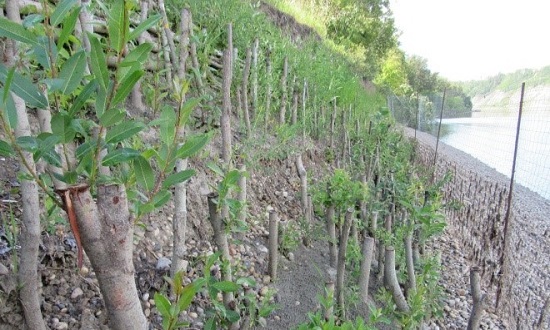
Restoring Riparian Areas Using Natural Processes

By David Polster, SER-WC Board
Understanding how natural systems operate to restore riparian areas is the first key step in learning how to use those same methods when restoring these areas after they have been disturbed or destroyed.
Riparian areas are often vegetated by pioneering species, such as willows, red-osier dogwood and cottonwood, which tend to form dense stands that slow down the flow of water past the site. This allows sediment that might be suspended in the water to drop out rather than eroding the streambank. And these dense stands also help to build up the banks, by adding this sediment to the streambanks.
Dense live staking mimics this natural riparian vegetation and performs the same functions, trapping sediment and controlling erosion. This function occurs because the dense live stakes slow the flow of water and allow sediment to drop out.
These same natural processes are used in a technique called “live silt fencing,” which involves rows of living cuttings installed in a stream or ditch, which slow the flow of the water and allow the sediment to drop out. The cuttings that are used in live silt fencing can continue to grow as their stems get buried, so they eventually form a willowy wetland that provides an ideal setting for the capture of sediment.
Natural systems for the stabilization of riparian zones can provide effective models for the treatment of sites that humans and their activities have damaged. By identifying how these natural systems provide stability, we can apply the same strategies in future restoration efforts.

